To conduct a building deviation analysis effectively, start by meticulous data collection using progress tracking tools. Monitor deviations continuously for quality assurance and swift error resolution. Analyze deviations systematically, identify root causes, plan corrective actions, and implement solutions promptly. Track progress over time, update deviation maps, and compare results with baseline data. Guarantee alignment of building models with designs by addressing deviations early on. This systematic process guarantees error correction, project alignment, and desired outcomes. Successful deviation analysis hinges on precision and adherence to the step-by-step process outlined.
Data Collection
Data collection for building deviation analysis is a critical initial phase that involves systematically gathering as-is BIM data from a variety of sources, including laser scanning, photogrammetry, and existing drawings. This step is essential for obtaining detailed information on building components, geometry, and spatial relationships. Various methods such as point cloud data acquisition, 3D laser scanning, and photogrammetric surveys are employed to capture accurate building information. Ensuring precise measurements and data collection is vital as they directly impact the quality of the subsequent deviation analysis results.
During data collection, one of the challenges that may arise is the presence of missing data. Missing data can hinder the accuracy and completeness of the collected information, potentially affecting the effectiveness of the deviation analysis process. Therefore, meticulous attention must be paid to identifying and addressing any gaps in the data to ensure a detailed dataset for the analysis. Proper documentation and verification processes should be implemented to minimize the occurrence of missing data and enhance the overall quality of the collected information.
Deviation Identification
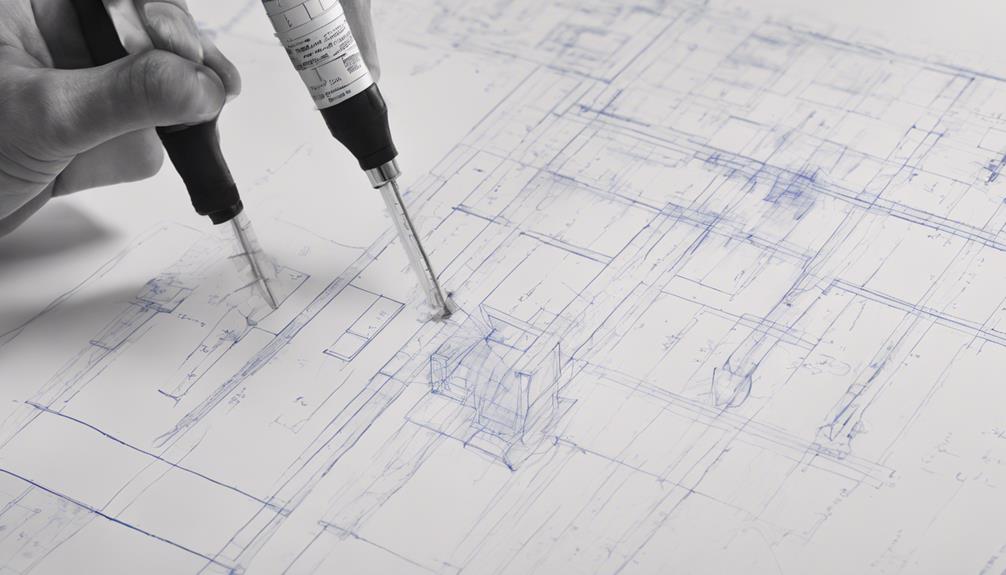
Utilizing advanced comparison techniques, deviation identification in building analysis involves meticulously scrutinizing actual BIM models against reference models to pinpoint discrepancies in geometric accuracy, element integrity, placement consistency, and dimensional correctness. To effectively identify deviations, a structured approach is necessary. The table below illustrates key steps in the deviation identification process:
| Deviation Identification Steps | Description | Importance |
|---|---|---|
| Data Preparation | Gather actual BIM models and reference models for comparison. Ensure consistency in data formats. | Essential for accurate analysis |
| Deviation Analysis | Utilize software tools to compare models and highlight variations. Analyze the data to identify discrepancies. | Vital for detecting errors |
| Error Visualization | Visualize deviations using color-coding or heat maps to enhance error detection. | Facilitates clear understanding |
Root Cause Analysis
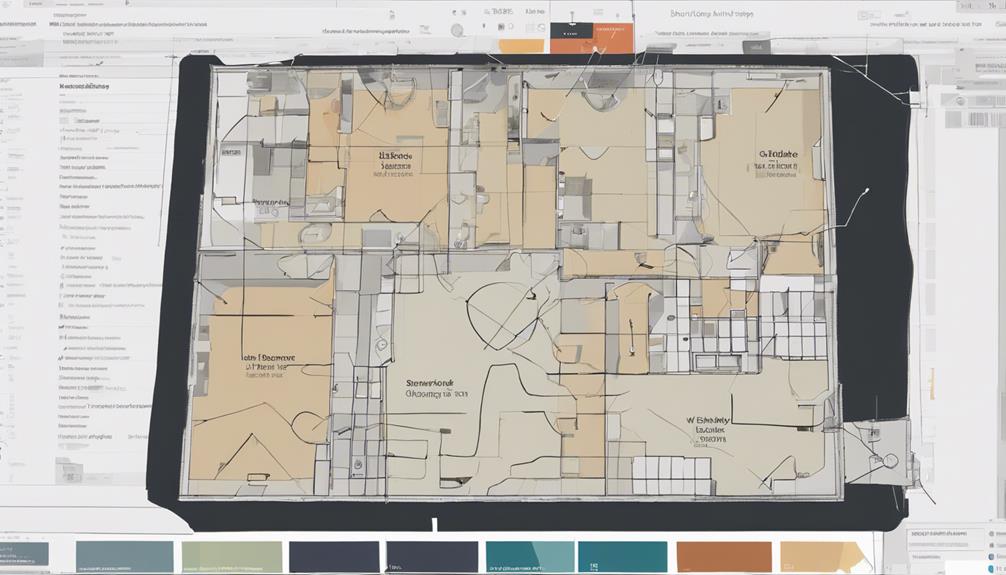
In dissecting building deviations, a thorough examination of underlying causes through root cause analysis is imperative to enhance BIM accuracy and prevent recurrence of modeling errors.
Root cause analysis in building deviation analysis involves identifying the fundamental reasons behind modeling errors. It aims to pinpoint the significant differences causing deviations in building information models.
By conducting root cause analysis, organizations can address systemic issues that lead to modeling errors. Understanding the root causes helps in implementing targeted corrective actions to improve BIM quality.
Various methods can be used to conduct root cause analysis, such as fishbone diagrams, 5 Whys analysis, fault tree analysis, and Pareto analysis. These techniques explore deeply into the root causes of deviations, providing a thorough understanding of the issues at hand.
Corrective Action Planning
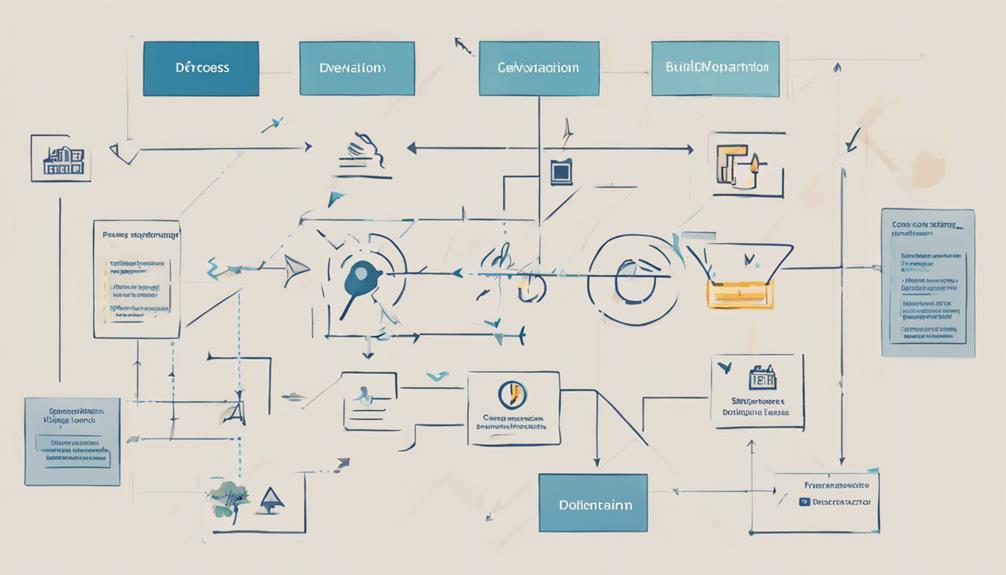
In addressing the POINTS of corrective action planning, the focus lies on the identification of root causes and the subsequent development of actionable steps.
This process involves a meticulous examination of error patterns and sources to prioritize the most critical actions.
Identify Root Causes
Identifying the root causes of deviations in building models is an essential step in corrective action planning to enhance BIM quality and prevent future errors. Conducting a thorough root cause analysis is vital for understanding the underlying issues that contribute to discrepancies in BIMs. This process helps in pinpointing the primary reasons for errors, enabling targeted corrective actions to be implemented effectively.
When identifying root causes, it is important to dive deep into the factors influencing deviations and not just address surface-level issues. By focusing on root cause analysis, corrective action planning becomes more precise and impactful, leading to improved BIM quality and increased accuracy in building models.
To achieve this, consider the following key aspects:
- Scrutinize the design process for potential flaws.
- Evaluate communication gaps among project stakeholders.
- Assess the impact of software or technology limitations.
- Analyze the influence of human error on building model deviations.
Develop Action Steps
When crafting action steps for corrective action planning in building information modeling, meticulous attention to detail and a methodical approach are essential to effectively address deviations and enhance modeling accuracy.
Firstly, it is important to identify root causes of deviations by conducting thorough analysis and investigation. Once the root causes are determined, prioritize corrective actions based on their severity and potential impact on project outcomes.
Collaboration among stakeholders is crucial during the implementation phase to make sure that corrective actions are carried out effectively. Clear communication regarding the action steps and responsibilities is key to successful implementation.
Additionally, continuous monitoring and feedback loops must be established to track the progress of corrective actions and make any necessary adjustments to the plan.
Implementation of Solutions
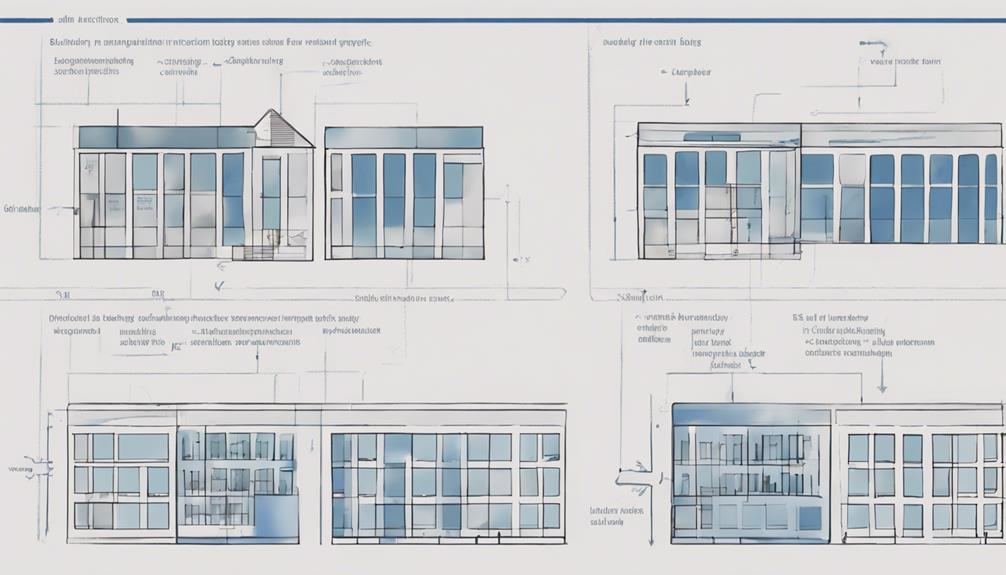
The successful execution of solutions derived from deviation analysis within the domain of building information modeling (BIM) holds the potential to greatly elevate the accuracy and quality of BIM data. Implementing informed decisions based on the analysis findings is vital to enhancing overall project efficiency and reducing errors.
To effectively implement solutions, the following steps can be taken:
- Revise Modeling Processes: Update BIM modeling procedures to incorporate lessons learned from deviation analysis, ensuring future projects benefit from improved processes.
- Enhance Training Programs: Provide targeted training to personnel involved in BIM modeling, focusing on areas identified as prone to deviations.
- Implement Automated Error Detection Tools: Integrate software solutions that can identify and flag deviation patterns automatically, enabling real-time error prevention.
- Track Progress: Regularly monitor the impact of implemented solutions on BIM data quality, making adjustments as necessary to optimize results.
Monitoring Progress
Monitoring progress in the context of deviation analysis involves implementing specific progress tracking methods. Utilizing precise data collection techniques is crucial for accurate analysis. Conducting thorough analysis and reporting is essential for making improvements based on the deviation analysis results.
These points are essential for ensuring that corrective actions are effectively implemented. Improvements are made based on the deviation analysis results. By following these steps meticulously, teams can enhance the accuracy and quality of their BIM models continuously.
Progress Tracking Methods
In the domain of building deviation analysis, the systematic tracking of deviations over time serves as a critical tool for evaluating the progression or regression within construction projects.
- Regular Monitoring: By tracking deviations consistently, trends and patterns can be identified to aid in decision-making and corrective actions.
- Effectiveness Evaluation: Monitoring progress in deviation analysis allows for the assessment of the effectiveness of implemented corrective measures.
- Visual Aids: Utilizing tools such as deviation maps and trend graphs facilitates easy interpretation and communication of progress to stakeholders.
- Quality Assurance: Continuous monitoring of deviations is essential for maintaining quality standards and preventing errors in building information modeling processes.
Data Collection Techniques
For effective monitoring of progress in deviation analysis within construction projects, meticulous data collection techniques play a pivotal role in documenting the status of error correction and improvement initiatives.
Utilizing progress tracking tools is essential to guarantee accurate and real-time updates on the resolution of identified errors and deviations. These techniques enable project managers to make informed decisions based on the current status of error correction efforts.
By implementing a systematic tracking mechanism, the project team can secure timely and effective resolution of identified deviations. Regularly updating deviation analysis reports is vital for reflecting the progress made in addressing errors and improving BIM quality.
Monitoring progress through data collection techniques is fundamental for evaluating the effectiveness of corrective actions and ensuring continuous improvement in construction projects.
Analysis and Reporting
A thorough analysis and reporting framework is essential for effectively monitoring progress in deviation analysis within construction projects. To make informed decisions and evaluate the quality of deviation analysis efforts, consider the following key steps:
- Track error resolution rates over time to assess improvement.
- Regularly update deviation maps with resolved errors to visualize progress and identify persistent issues.
- Compare current deviation analysis results with baseline data to measure the effectiveness of corrective actions.
- Report on the status of deviation analysis findings to stakeholders to guarantee transparency and accountability in the improvement process.
Utilizing key performance indicators (KPIs) related to error identification and resolution can quantify progress in deviation analysis.
Ensuring Desired Outcomes
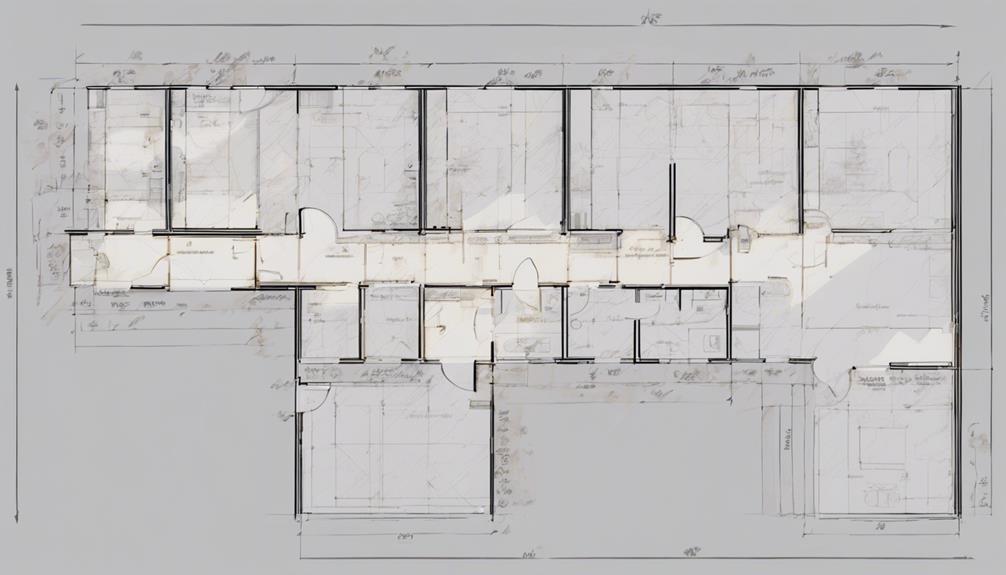
With a meticulous focus on aligning actual building models with the intended designs, ensuring desired outcomes in construction projects requires a rigorous analysis of deviations. By comparing the actual building models to the desired or intended models, stakeholders can identify any discrepancies through deviation analysis.
This process plays an important role in the early detection and correction of errors within the building information modeling (BIM) processes. Through the systematic analysis of deviations, project stakeholders can guarantee that the final construction aligns precisely with the project specifications, thereby enhancing quality control.
Additionally, addressing deviations promptly minimizes the need for rework, ultimately saving time and resources. By conducting thorough deviation analysis and ensuring alignment between the actual and desired models, construction projects can achieve the desired outcomes and meet the project's goals effectively.
This meticulous approach guarantees that the constructed building reflects the initial design intent accurately.
Can Relative Strength Analysis be Used in Building Deviation Analysis?
Yes, the method of using calculate relative strength stock analysis can be incorporated into building deviation analysis. By comparing the relative strength of a particular stock to the overall market, deviations in performance can be identified and analyzed. This can provide valuable insights for investment decisions.
Frequently Asked Questions
What Are the 7 Steps of Data Analysis?
Data analysis typically involves seven essential steps:
- Defining the problem
- Collecting data
- Cleaning and transforming data
- Conducting exploratory data analysis
- Performing statistical analysis using appropriate methods
- Interpreting results
- Communicating findings effectively
Statistical methods are employed to draw meaningful conclusions, while data visualization techniques aid in understanding patterns and relationships within the data. Each step is vital in ensuring the accuracy and reliability of insights derived from the data analysis process.
How to Perform EDA Step by Step?
Exploratory data analysis (EDA) involves a systematic approach to understanding data characteristics before delving into modeling.
To perform EDA step by step, start by cleaning and preparing the data, then conduct univariate and bivariate analyses to uncover patterns and relationships.
Utilize visualization techniques such as charts and graphs to interpret the data effectively.
Incorporating these steps guarantees a thorough understanding of the data, laying a solid foundation for further analysis.
What Are the 5 Steps of Data Analysis?
The 5 steps of data analysis encompass:
- Data collection
- Data cleaning
- Data exploration
- Statistical modeling
- Data interpretation
Data interpretation involves deriving conclusions and recommendations from the analysis, while statistical modeling applies algorithms to identify patterns and make predictions.
Each step is crucial in ensuring the accuracy and reliability of the final insights, supporting informed decision-making processes based on the prepared data.
How to Do a Meta-Analysis Step by Step?
In conducting a meta-analysis, the process involves defining research questions, extensive literature search, data extraction, applying pivotal statistical methods, interpreting results, and disseminating findings.
Meta-analysis benefits from its ability to synthesize evidence from multiple studies, identify trends, and provide a thorough understanding of a research topic.
Statistical techniques play a vital role in quantitatively summarizing overall effects and evaluating inconsistencies across studies, ultimately informing decision-making in various fields like healthcare, social sciences, and education.
Conclusion
To sum up, performing building deviation analysis is an essential process in ensuring the structural integrity and safety of a building. By following a systematic approach of data collection, deviation identification, root cause analysis, corrective action planning, implementation of solutions, and monitoring progress, desired outcomes can be achieved.
While some may argue that this process is time-consuming and resource-intensive, the potential risks and consequences of not addressing deviations far outweigh the initial investment of time and resources.


